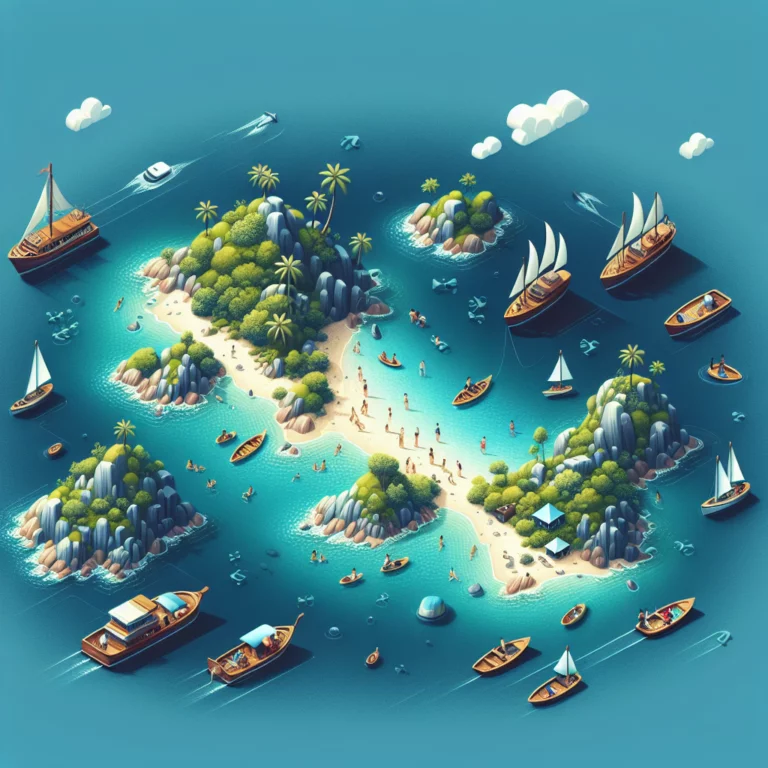Water Sports Galore: Energizing Activities For Beach Lovers
Looking for a thrilling and energizing way to spend your beach vacation? Look no further! Our article, “Water Sports Galore: Energizing Activities For Beach Lovers,” is your ultimate guide to the most exciting water sports to try out on your next beach getaway. Whether you’re a fan of surfing, kayaking, or jet skiing, we’ve got you covered. So grab your swimsuit and get ready for an adrenaline-packed vacation by the shore.
Discovering the Thrill of Surfing
Understanding the basics of surfing
Surfing is an exhilarating water sport that allows you to ride the waves with style and grace. To get started, you’ll need a surfboard and a good understanding of the basics. The first step is to learn how to paddle and balance on your surfboard. This involves positioning yourself correctly on the board, lying flat, and using your arms to propel yourself through the water. Once you have mastered the art of paddling, it’s time to learn how to catch a wave and stand up on your board. This requires timing, balance, and a bit of coordination. With practice and determination, you’ll soon be riding the waves like a pro.
Top surfing spots around the world
If you’re looking to catch some epic waves, there are countless surfing spots around the world that will leave you in awe. One popular destination is Pipeline in Oahu, Hawaii. Known for its thrilling and powerful waves, Pipeline attracts surfers from all over the world. Another top spot is Teahupo’o in Tahiti, French Polynesia. Its massive and relentless waves make it a favorite among experienced surfers. Other notable locations include Jeffreys Bay in South Africa, Banzai Pipeline in Hawaii, and Cloudbreak in Fiji. Wherever you choose to surf, make sure to research the local conditions and be aware of your skill level before taking on the waves.
Safety measures for surfing enthusiasts
While surfing is a thrilling and invigorating sport, it’s important to prioritize safety at all times. Here are some safety measures to keep in mind:
- Always surf with a buddy. Having someone with you can provide an extra level of safety and support.
- Choose an appropriate surf spot for your skill level. Avoid waves that are too advanced or dangerous for your abilities.
- Wear the right protective gear, such as a leash, surfboard wax, and a wetsuit if necessary.
- Be mindful of your surroundings. Always be aware of other surfers, swimmers, and potential hazards in the water.
- Stay hydrated and take breaks when needed. Surfing can be physically demanding, so it’s important to listen to your body.
By following these safety measures, you can enjoy the thrill of surfing while minimizing the risks involved.
Experience the Calm of Paddle Boarding
Introduction to paddle boarding
Paddle boarding, also known as stand-up paddleboarding (SUP), is a water sport that combines balance, strength, and tranquility. Unlike surfing, paddleboarding is done on calmer waters and involves using a paddle to propel yourself forward. It offers a unique way to explore the water and enjoy the serenity of nature. Paddleboarding is suitable for all ages and fitness levels, making it a versatile activity that can be enjoyed by everyone.
Locations offering tranquil paddle boarding experience
If you’re seeking a peaceful and serene paddleboarding experience, there are various locations around the world that will fulfill your desire. Lake Tahoe, located on the border of California and Nevada, offers crystal-clear waters and breathtaking mountain views. The Maldives, with its turquoise lagoons and picture-perfect beaches, provides a tropical paradise for paddleboarding enthusiasts. Another peaceful destination is Lake Louise in Banff National Park, Canada, which offers stunning landscapes and a tranquil setting. Whether you prefer ocean, lake, or river paddleboarding, there is a perfect spot out there for you to enjoy the calm and beauty of nature.
Selecting the right gear for paddle boarding
Before you embark on your paddleboarding adventure, it’s important to have the right gear. The most essential item is a paddleboard, which can be inflatable or rigid. Inflatable paddleboards are convenient for travel and storage, while rigid boards offer better stability and performance. You will also need a paddle that is the right length for your height, a personal flotation device (PFD) for safety, and appropriate clothing for the conditions. Depending on the location and water temperature, you may need a wetsuit, rash guard, or board shorts. Don’t forget sunscreen and a waterproof bag to keep your belongings dry during your paddleboarding excursion.
The Adventure of Kitesurfing
Learning about kitesurfing
Kitesurfing, also known as kiteboarding, is an adrenaline-pumping water sport that combines elements of surfing, wakeboarding, and paragliding. It involves riding on a small board while being harnessed to a kite that is propelled by the wind. Kitesurfing requires both skill and physical strength, as you must navigate the waves, control the kite, and maintain your balance. While it may seem daunting at first, with proper training and practice, kitesurfing can be a thrilling and rewarding experience.
Ideal kitesurfing destinations
When it comes to kitesurfing, certain destinations stand out for their ideal conditions and breathtaking scenery. One popular spot is Tarifa in Spain, known for its strong and consistent winds, making it a kitesurfing mecca. Another top destination is Maui in Hawaii, where you’ll find a wide range of kiteboarding spots suitable for all levels of experience. The Brazilian state of Ceará is also highly regarded for its warm waters, steady winds, and vast sand dunes. Other notable kitesurfing destinations include Zanzibar in Tanzania, Cabarete in the Dominican Republic, and Cape Town in South Africa. No matter where you choose to kitesurf, always check the local weather conditions and seek guidance from experienced instructors for a safe experience.
Precautions while kitesurfing
Kitesurfing can be an incredibly fun and exhilarating water sport, but safety should always be a priority. Here are some precautions to keep in mind:
- Take lessons from a certified instructor to learn the proper techniques and safety procedures.
- Always check the wind conditions and forecast before heading out. Avoid kitesurfing in strong offshore winds or severe weather conditions.
- Wear a helmet and a harness for added protection and stability.
- Maintain a safe distance from other kitesurfers, swimmers, and obstacles in the water.
- Be aware of your physical limits and avoid pushing yourself beyond your skill level.
- Familiarize yourself with the local rules and regulations regarding kitesurfing in the area you plan to visit.
By following these precautions, you can fully enjoy the adrenaline rush and excitement of kitesurfing while ensuring your safety and the safety of others around you.
Jet Skiing – Fast and Fun
Knowing the art of jet skiing
Jet skiing is a thrilling water sport that combines speed, agility, and a whole lot of fun. Riding on a compact and powerful personal watercraft (PWC), you’ll navigate through the water, enjoying the wind in your hair and the adrenaline pumping through your veins. Jet skiing requires a bit of balance and coordination, but it’s relatively easy to pick up with some practice. Whether you’re whizzing across the open ocean or zipping along a picturesque lake, jet skiing offers an exciting and fast-paced adventure.
Beaches hosting exciting jet-skiing
If you’re looking for the perfect beach destination to indulge in some exhilarating jet skiing, there are plenty of places around the world that cater to thrill-seekers. Cancun, Mexico, is renowned for its crystal-clear waters and wide sandy beaches, making it an ideal spot for jet skiing. Miami Beach in Florida is another popular destination with its vibrant atmosphere and stunning coastline. The Mediterranean island of Ibiza offers not only a vibrant nightlife scene but also plenty of opportunities for jet skiing, with its turquoise waters and beautiful coves. Other notable jet-skiing locations include Maldives, Dubai, and Gold Coast in Australia. Wherever you choose to go, you’re guaranteed an unforgettable adventure on the water.
Safety guidelines for jet skiing lovers
While jet skiing is undoubtedly an exciting and thrilling water sport, it’s crucial to prioritize safety to ensure a fun experience for everyone involved. Here are some safety guidelines to keep in mind:
- Always wear a personal flotation device (PFD) or life jacket. This will keep you buoyant and safe in case of an accident.
- Familiarize yourself with the rules and regulations of the area where you’ll be jet skiing. Follow any speed limits and be aware of any restricted areas.
- Maintain a safe distance from other watercraft, swimmers, and obstacles in the water.
- Avoid reckless behavior, such as excessive speed or sudden maneuvers, which can lead to accidents.
- Check the weather conditions before embarking on your jet skiing adventure. Avoid stormy or turbulent weather that could pose a risk to your safety.
- Never operate a jet ski under the influence of alcohol or drugs. Always maintain a clear and focused mind while on the water.
By adhering to these safety guidelines, you can enjoy the fast-paced excitement of jet skiing while ensuring the safety of yourself and others.
Exploring the Depths with Scuba Diving
Learning to scuba dive
Scuba diving offers a unique opportunity to explore the underwater world and discover its incredible beauty. Before embarking on your scuba diving adventure, it’s essential to receive proper training from a certified instructor. You’ll learn how to use scuba diving equipment, navigate underwater, and safely ascend and descend. Understanding the principles of buoyancy, equalization, and decompression is vital for a safe and enjoyable diving experience. With the right knowledge and skills, you’ll be able to dive into an underwater wonderland like never before.
Most epic scuba diving spots
There are countless breathtaking scuba diving spots around the world that will leave you in awe of the marine life and stunning underwater landscapes. The Great Barrier Reef in Australia is one such iconic destination, known for its vibrant coral reefs and diverse marine ecosystem. The Maldives is another must-visit location, offering crystal-clear waters, colorful coral reefs, and the chance to swim alongside manta rays and whale sharks. Other world-class diving destinations include Belize’s Great Blue Hole, Palau’s Jellyfish Lake, and the Galapagos Islands in Ecuador. Each dive site offers unique experiences and unforgettable encounters with marine life, making scuba diving an adventure like no other.
Safety Practices for scuba diving
Scuba diving is an incredible adventure, but it’s essential to prioritize safety and adhere to best practices. Here are some safety measures to follow:
- Obtain proper certification from a recognized diving organization before attempting any dives.
- Dive within your training and experience level. Avoid diving beyond your limits or attempting advanced dives without the necessary qualifications.
- Perform pre-dive safety checks on your equipment to ensure it is in good working condition.
- Dive with a buddy and maintain constant communication and awareness of each other’s whereabouts.
- Ascend slowly and perform mandatory safety stops to prevent decompression sickness.
- Avoid touchin







